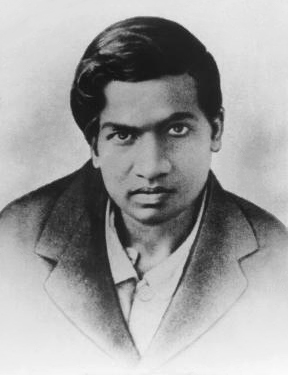If there is such a thing as mathematical talent, then it clearly has to be found everywhere. At a first glance, this could seem a pretty obvious statement but things get a bit more complicated if you try to better define talent and, unfortunately, also everywhere.
I recently attended a meeting of the monthly Diversity Journal Club of the Faculty of Science at the University of Amsterdam where we reflected on what could be good strategies towards a more global and inclusive internationalisation of higher education. We discussed potential mentorship schemes for students coming from the Global South, tips for a soft-landing of students coming from different backgrounds, capacity building in African departments and the effort to decolonize institutions and curricula around the world.
Compared to other parts of society, universities and research institutions are usually very international environments. However, more than aimed at creating a diverse and inclusive workplace, the internationalisation of universities has often being economically-driven and disconnected from the local needs of students and staff members. Current hiring procedures are often guided by academic ranking and high impact publications and the universities that offer studentships for international students have admission criteria that are getting more and more competitive, leaving little resources for not self-supported students.
This approach is excluding not just single individuals, but also institutions and universities. That is most notable for institutions in the African continent, that do not have access to a proportional share of research funding and experience a diaspora of talented students and scholars. As reported in one of the suggested articles for the Journal club, “the bulk of doctoral education is provided by relatively few institutions globally, notably in the US and the UK which account for more than 50% of all international doctoral students”. Critical voices have being calling for a rethinking of this “academic capitalism” and hope for a more inclusive system where global excellence and national relevance can be intertwined.
During the discussion, I thought about probably one of the most famous encounters in the history of mathematics: the one between Srinivasa Ramanujan and Godfrey Harold Hardy. Ramanujan was a child prodigy from India, who arrived to wonderful mathematical achievements even though he did not receive any formal training. In 1913, he began a postal correspondence with Hardy, a giant of the English mathematics of the time and professor at Cambridge, who recognised Ramanujan’s immense talent and arranged for him to come to England where they collaborated for several years. Ramanujan is often described as an intuitive mathematician who could experience mathematics almost to a different sensory level that anyone else. Hardy had a crucial role in nurturing the genius of Ramanujan and in trying to teach him a more formal and rigorous approach to the subject. The time in England, while mathematically very fruitful, was very difficult for Ramanujan. He first had to compromise his religious convictions since for Brahamin Hindus, as he was, it was considered sinful to cross the sea and leave India. Once in Cambridge, he had to face racial stereotypes and, as a strict vegetarian, had troubles finding enough food to eat on top of adjusting to the cold British winter. He suffered both in his physical and mental health, arriving to attempt to commit suicide in the London Underground. He returned to India in 1919 where he died one year later, when he was only 32.
This story is well-known in mathematics circles, but after the reflections of the Journal Club I could not help to wander into speculations: what if Hardy had gone to Ramanujan and not the other way round? I am not trying to indulge in counterfactual history, but having supervised quite a few African students in the past years, I often ask myself what is the best strategy to support these students and make them thrive and succeed in their mathematical journey.
As for every complicated problem, there is no easy solution. In the short term, while there is still little capacity to home-grow PhD students and researchers, trying to create opportunities for students coming from developing countries to pursue a higher education in Western institutions is a helpful strategy. This effort should be combined with soft-landing schemes that ensure that people coming from different cultures feel welcome and integrated into the community. With time, some of these researchers could go back to their home countries and start building research schools and develop local thematic branches. In this process, we should accept to challenge our preconceptions about so-called excellence and be ready to recognise talent in all of its diverse incarnations.






